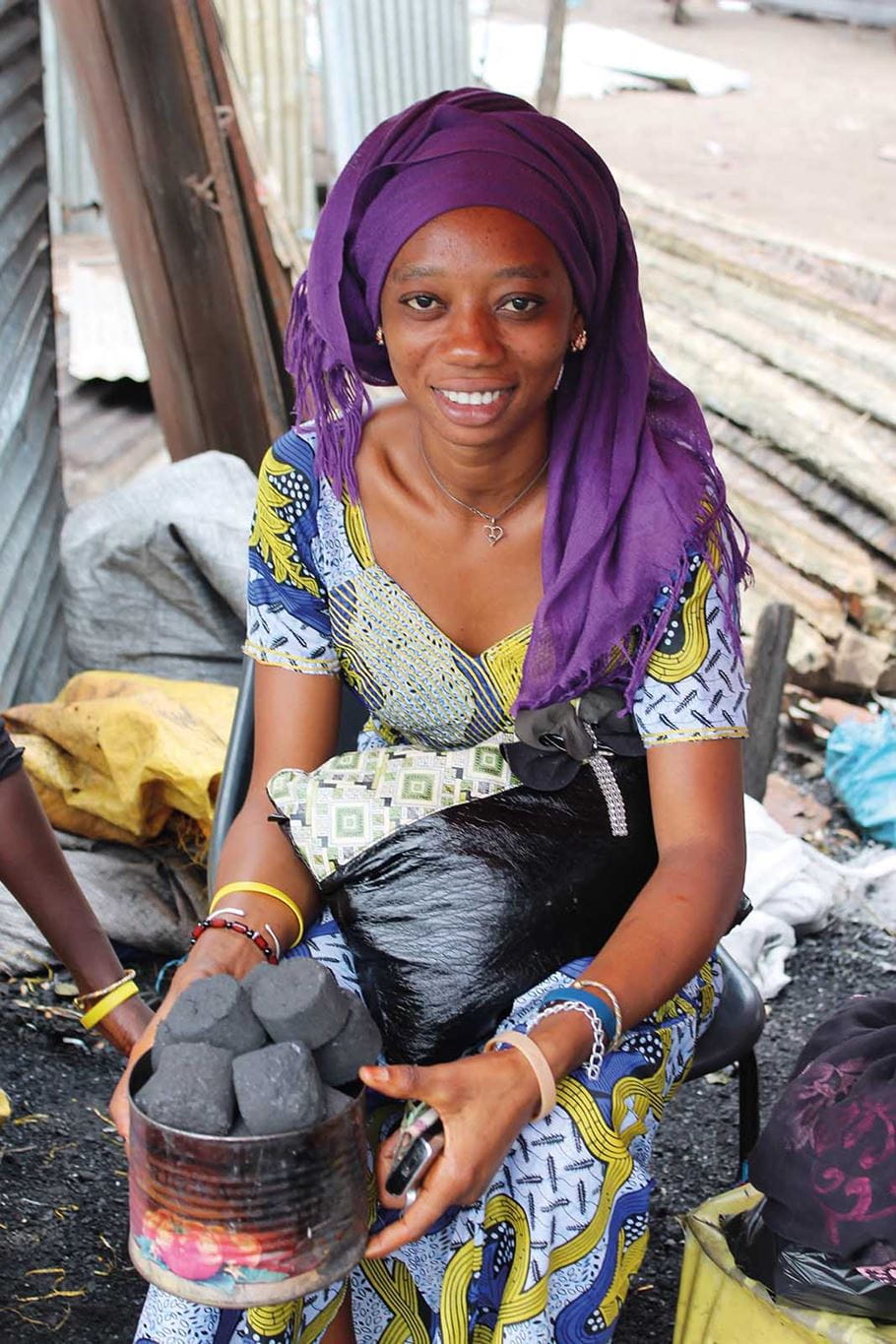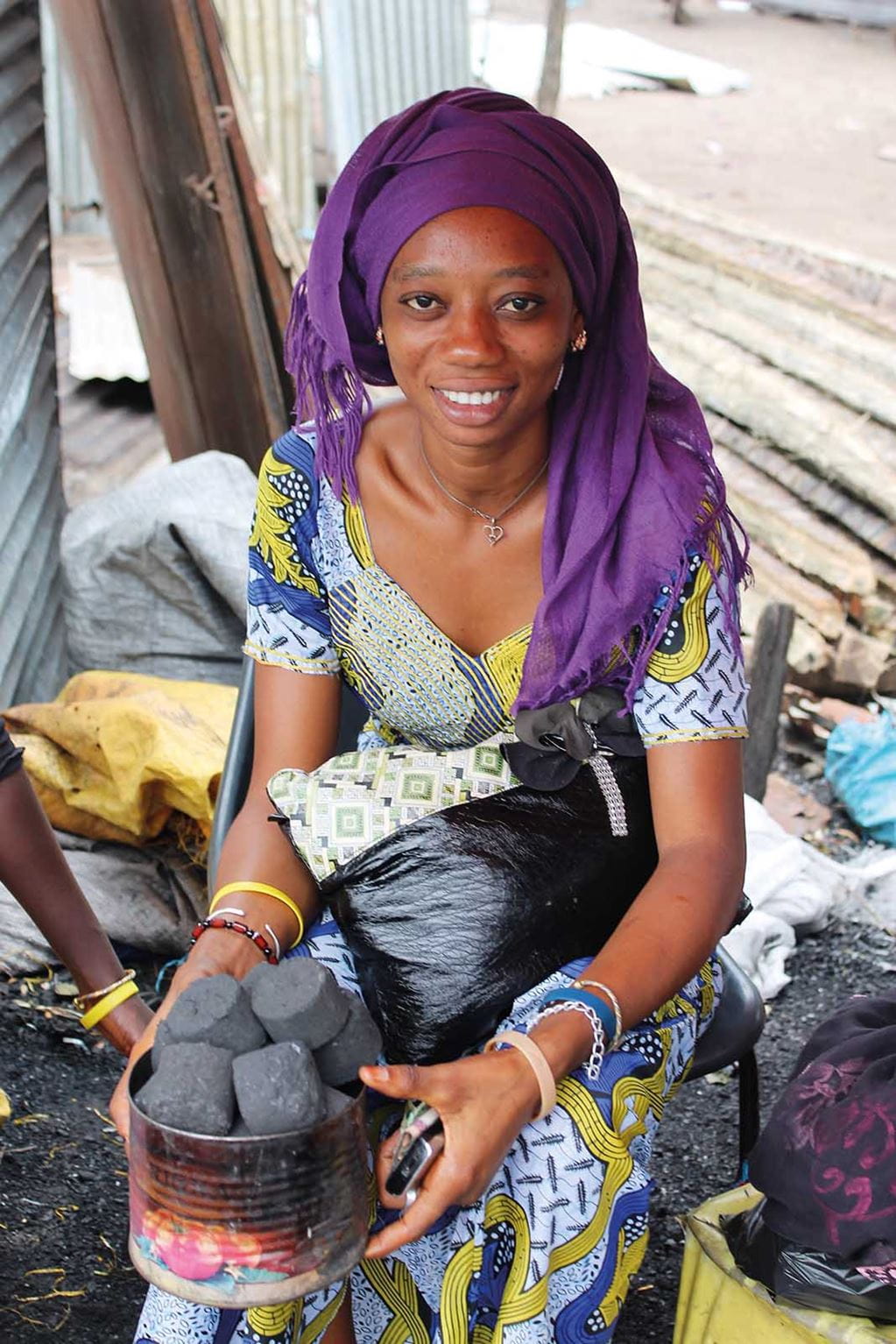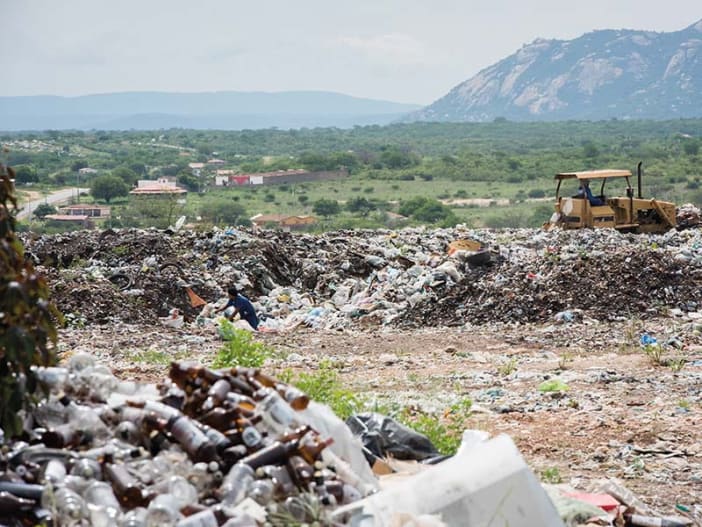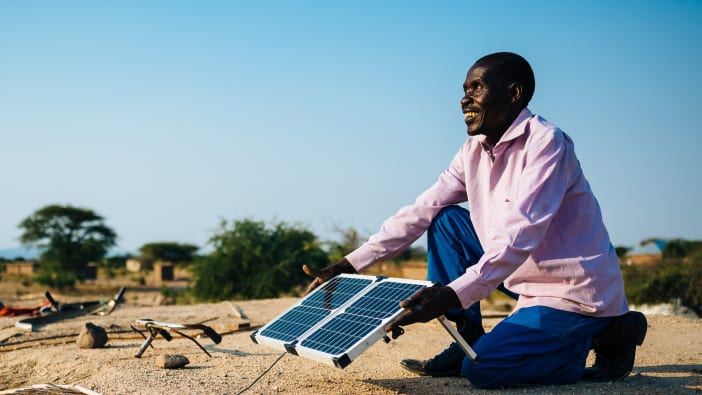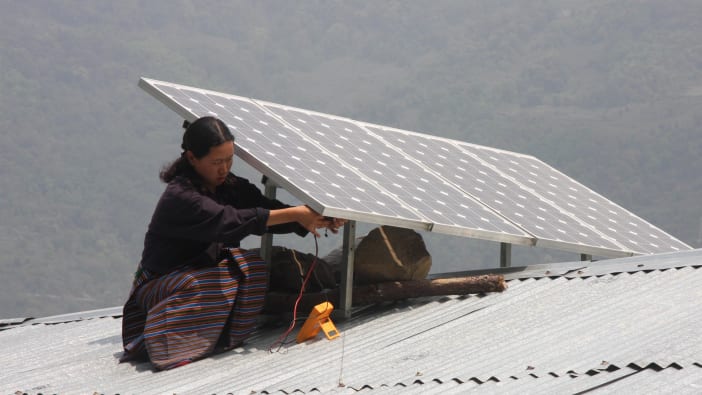Woody waste materials, such as dry leaves and coconut shells, are all around us. In a few easy steps, you can transform these into charcoal briquettes – a great source of fuel for cooking.
Briquettes are cheaper than traditional charcoal, and burn hotter and for longer. When used as a fuel for cooking, they are less smoky than wood, reducing the problem of indoor pollution. They do not require trees to be cut down, helping to protect the environment. The equipment is cheap and the process is easy.
Summary: Carbonise the material in a barrel with limited air (like making charcoal), then grind it into a powder, and mix with binder. Compress the mixture in a briquette mould and then dry the briquettes in the sun.
Waste materials you can use: Dried leaves, twigs, straw, coconut shells, baobab shells, maize cobs, groundnut (peanut) shells and sawdust. Do not use anything that is too wet or anything other than dry leaves or woody waste. Make sure there are absolutely no plastics in the waste.
Try out different mixtures of materials that you can find locally. One example of a mixture that works is 50kg of groundnut or coconut shells plus 25kg mango leaves. You will then need 1kg cassava flour (or another similar starch) and 2 litres of water to create a binder for the briquettes. If you are using leaves, you may want to try adding some woodier material (such as coconut shells). It is better to have a consistent mix of materials so the briquettes burn at a steady rate.




